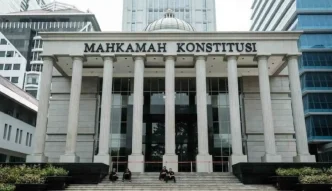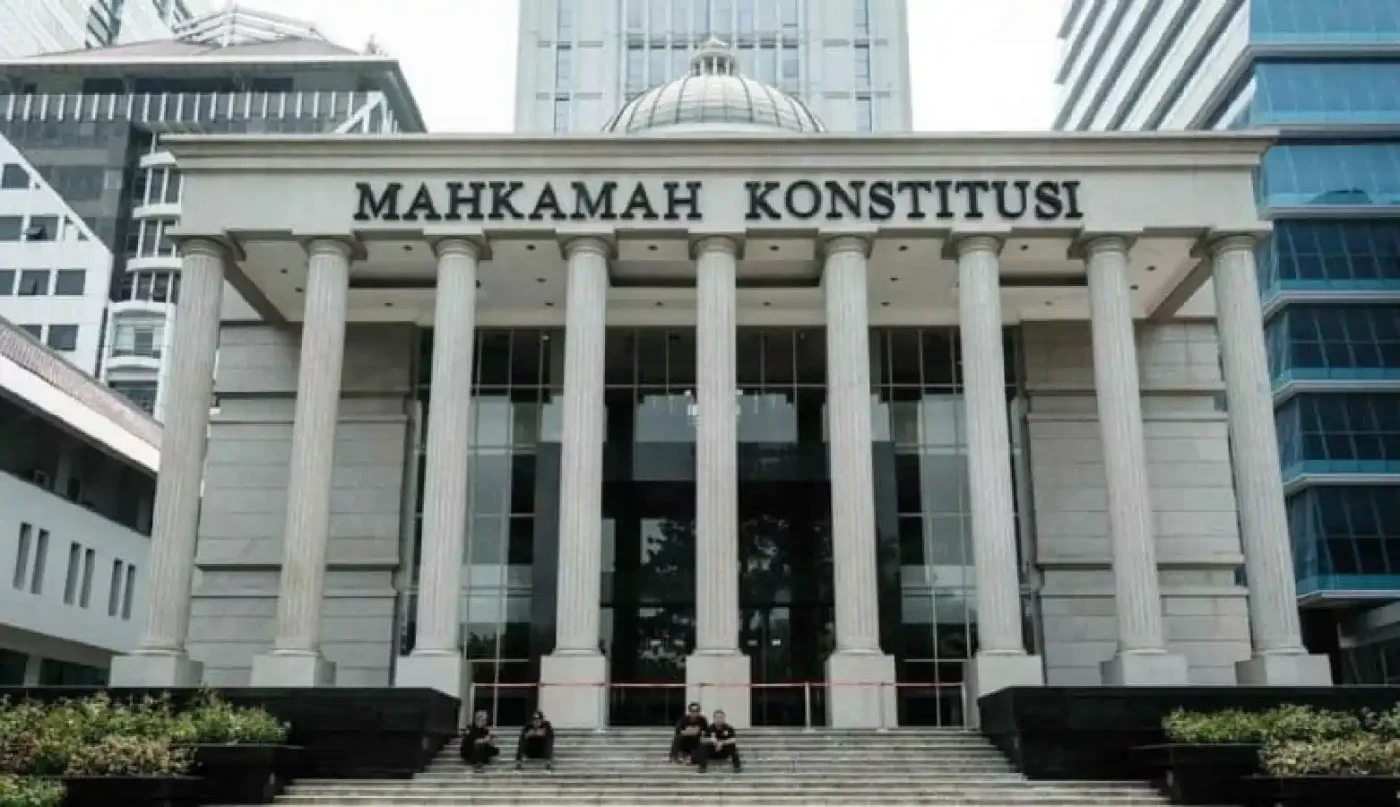In a landmark ruling, Indonesia’s Constitutional Court has declared that the government must extend free basic education to students in both public and private schools, addressing a long-standing gap in access to education. The decision, delivered on May 29, 2025, challenges the implementation of the 2003 National Education System (Sisdiknas) Law, which has so far limited free education to public institutions. This ruling could reshape the country’s education landscape, potentially benefiting millions of students who rely on private schools due to capacity constraints in the public system.
Court Ruling Targets Education Inequality
The Constitutional Court’s decision came in response to a judicial review petition filed by the Network for Education Watch Indonesia (JPPI) in December 2023. The plaintiff contested Article 34, paragraph 2 of the 2003 Sisdiknas Law, which mandates “compulsory basic education at least at the basic level without any charges.” JPPI argued that this provision should apply to students in private schools and madrassas—Islamic educational institutions—equivalent to elementary and junior high levels, not just public schools.
During the hearing on May 28, 2025, the justices highlighted that the current application of the law has created disparities. While the government funds free education in public elementary and junior high schools, many students are forced to enroll in private institutions due to limited spaces. These private schools often charge tuition fees, placing a financial burden on families and contradicting the state’s obligation to provide accessible education.
“The state must implement a basic education financing policy that covers students in public and private schools as well as madrassas, through educational assistance mechanisms or subsidies, so that there won’t be any gap in access to basic education” said Justice Enny Nurbaningsih while reading the ruling. The court emphasized that free basic education is a fundamental economic, social, and cultural right, which the state must fulfill progressively based on its capacity.
Balancing State Capacity and Private Institutions
The justices acknowledged the complexities of implementing this policy given the state’s limited financial resources. Justice Enny noted that the government should prioritize funding for private schools that meet specific criteria for assistance, ensuring that aid is directed where it is most needed. This selective approach aims to address disparities without overextending public funds.
However, the court drew a clear line for private institutions offering specialized curricula, such as international or religious schools. These schools, often chosen by parents aware of tuition costs, are not required to provide free education under the ruling. The decision reflects a pragmatic balance between expanding access and respecting the autonomy of certain educational providers.
Additionally, the court urged private schools to alleviate tuition costs for students, particularly in areas lacking state-funded alternatives. This call to action underscores the shared responsibility between the government and private sector to ensure no child is left behind due to financial constraints.
Impact on Families and Education Access
For many Indonesian families, the ruling offers a glimmer of hope. Private schools have become a necessity for countless students, especially in urban centers like Jakarta, where public schools are often oversubscribed. The cost of private education, though sometimes modest compared to international standards, can still be prohibitive for low-income households. For instance, annual tuition fees at private elementary schools in Jakarta can range from 5 million to 15 million Indonesian Rupiah (US$310 to US$930, based on exchange rates as of May 29, 2025), a significant expense for many families.
If implemented effectively, subsidies or educational assistance could ease this burden, allowing more children to complete basic education without financial strain. Education advocates have welcomed the ruling, though some caution that the devil lies in the details of execution. “This is a step forward, but the government must outline a clear roadmap for funding and prioritization” said a spokesperson for JPPI, the group behind the petition.
The ruling also shines a light on rural and underserved regions, where access to any form of schooling—public or private—remains a challenge. In areas with no nearby state-funded schools, private institutions or madrassas often fill the gap, making the court’s push for subsidies particularly relevant. However, logistical hurdles, such as identifying eligible schools and distributing funds equitably, could delay tangible outcomes.
Government Response and Policy Challenges
The Indonesian government now faces the task of translating the court’s ruling into actionable policy. Crafting a funding plan that balances the needs of public and private students while respecting fiscal constraints will be no small feat. The court’s suggestion of a gradual, selective, and affirmative approach offers some flexibility, but it also raises questions about how prioritization will be determined and whether sufficient resources can be mobilized.
Historically, Indonesia has struggled with education funding, despite constitutional mandates to allocate at least 20 percent of the national budget to the sector. Capacity issues in public schools persist, with overcrowded classrooms and teacher shortages reported across the archipelago. Extending financial support to private schools could strain budgets further, prompting concerns about trade-offs with other public services.
Moreover, the government must navigate potential pushback from private school operators, particularly those reliant on tuition fees to maintain operations. While the court encouraged these institutions to reduce costs for students, compliance may vary, especially among schools serving middle- and upper-income families who may resist subsidized models.
Broader Implications for Indonesia’s Education System
The Constitutional Court’s ruling arrives at a critical juncture for Indonesia, a nation of over 270 million people with a young and growing population. Ensuring access to basic education is not just a matter of policy but a cornerstone of national development. Education equips individuals with skills for economic participation and fosters social cohesion in a country marked by cultural and geographic diversity.
Yet, disparities in access remain stark. According to data from the Ministry of Education, Culture, Research, and Technology, millions of children still face barriers to completing basic education, with dropout rates higher in rural and remote areas. The reliance on private schools, often seen as a stopgap, has perpetuated inequality, as wealthier families secure better opportunities while others struggle with costs.
This ruling could serve as a catalyst for broader reforms, pushing the government to address systemic issues beyond funding. Teacher training, infrastructure development, and curriculum standardization are all areas ripe for improvement. If subsidies for private schools are rolled out, they could set a precedent for public-private partnerships, potentially unlocking new models for delivering education.
However, skeptics warn that without robust oversight, financial assistance might be mismanaged or fail to reach the most vulnerable. Transparency in allocation and accountability in outcomes will be key to ensuring the ruling’s intent is realized. Public sentiment, as reflected in discussions on platforms like X, shows a mix of optimism and caution, with many Indonesians eager for change but wary of bureaucratic delays.
Regional Context and Global Comparisons
Indonesia’s push for inclusive education funding aligns with broader regional trends in Southeast Asia, where governments grapple with similar challenges. Neighboring countries like the Philippines and Thailand have also faced debates over public versus private education, with varying degrees of state intervention. In the Philippines, for instance, voucher programs have been used to subsidize private school tuition for low-income students, a model Indonesia might consider.
Globally, the right to free basic education is enshrined in frameworks like the United Nations’ Sustainable Development Goals (SDGs), specifically Goal 4 on quality education. Indonesia’s commitment to this principle, as reinforced by the court ruling, signals alignment with international norms. Yet, translating legal victories into on-the-ground impact remains a universal hurdle, particularly in resource-constrained settings.
Looking Ahead: A Test for Implementation
As Indonesia’s government begins to draft policies in response to the Constitutional Court’s ruling, the nation watches closely. Will this decision mark a turning point in dismantling barriers to education, or will it falter under the weight of logistical and financial challenges? For now, the ruling stands as a powerful acknowledgment of every child’s right to learn, regardless of whether their classroom is public or private.
For students at schools like Angkasa 5 Elementary in Jakarta, where daily routines continue amidst policy debates, the hope is that change will come soon. Their futures, and those of millions like them, hang in the balance as the state grapples with its obligation to build a more equitable education system.















